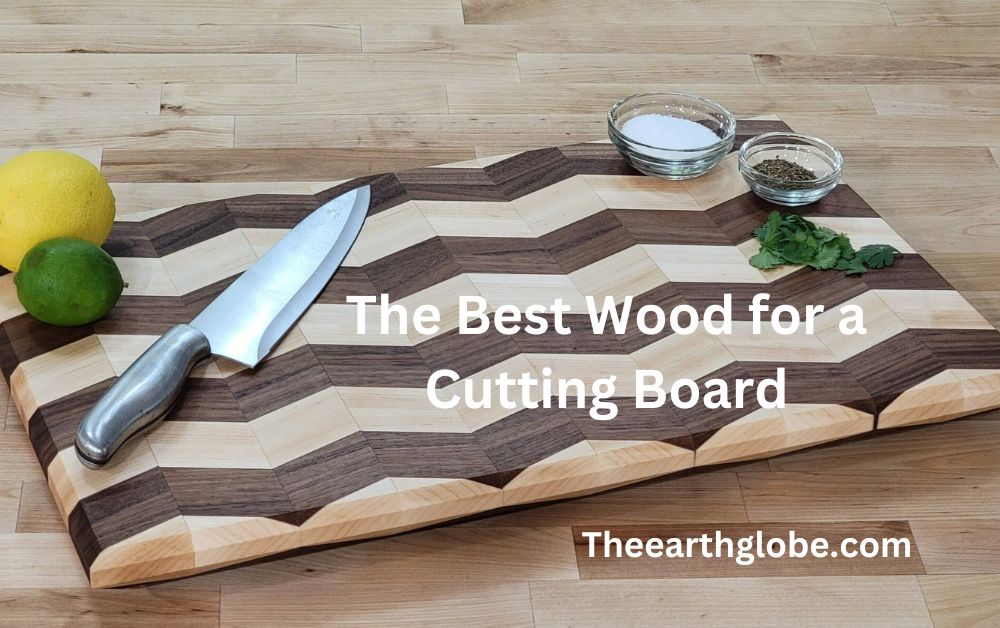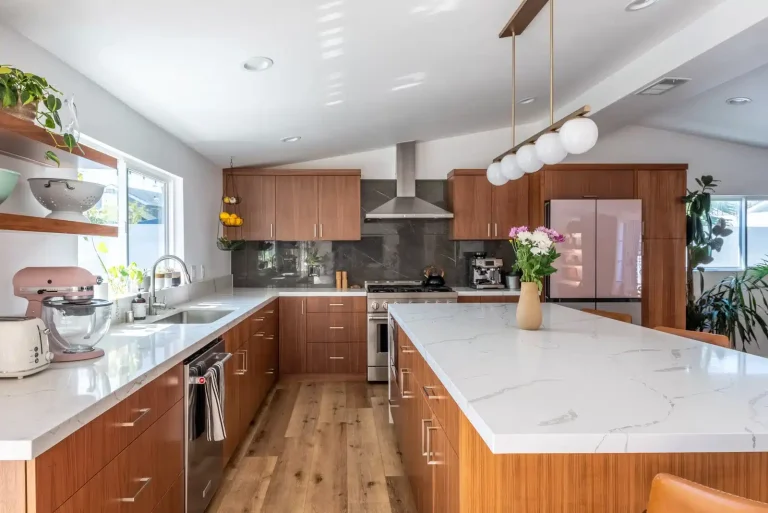The Best Wood for a Cutting Board: A Comprehensive Guide
A cutting board is one of the most essential tools in any kitchen. Whether you’re a professional chef or a home cook, having a durable, reliable cutting surface can make all the difference in your cooking experience. But what’s the best wood for a cutting board? Choosing the right material for your cutting board is crucial, not only for the longevity of the board itself but also for maintaining your knives and ensuring food safety. In this article, we’ll explore the top types of wood for cutting boards, their benefits, and how to choose the best option for your kitchen.
Why Choosing the Best Wood for a Cutting Board Matters
When selecting the best wood for a cutting board, it’s important to consider factors like durability, food safety, and maintenance. A well-chosen wooden cutting board can protect your knives from dulling, prevent bacteria build-up, and add a stylish element to your kitchen. The best wood types provide the perfect balance between softness and hardness, ensuring that your knives won’t be damaged while also being resilient enough to withstand daily chopping, slicing, and dicing.
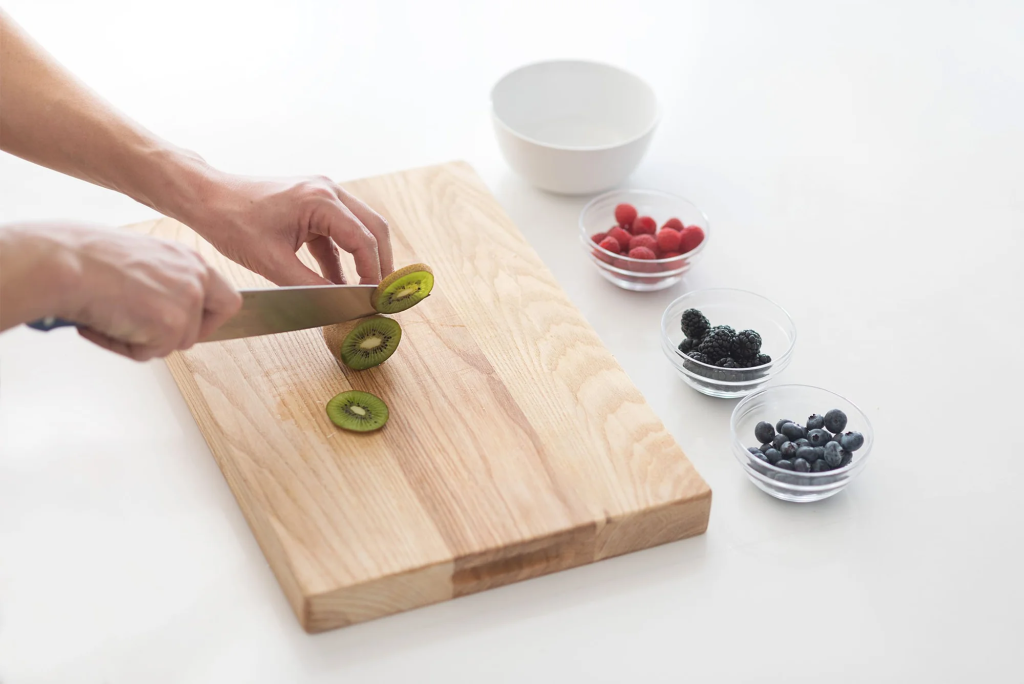
What to Look for in the Best Wood for a Cutting Board
Before diving into specific wood types, it’s essential to understand what characteristics make certain woods better for cutting boards than others. The best wood for a cutting board should have:
- Hardness: The wood should be hard enough to resist deep cuts but not so hard that it damages your knives.
- Closed grain: Open-grain woods like oak can trap food particles and bacteria, making them unsuitable for cutting boards.
- Non-toxic properties: The wood should be safe for food preparation without risking contamination.
- Durability: The wood should be resistant to wear and tear from knife cuts and food moisture.
Now that we know what to look for, let’s explore some of the top wood types for cutting boards.
Maple: The Best Wood for a Cutting Board
One of the most popular and widely recommended woods for cutting boards is maple. Specifically, hard maple or “sugar maple” is considered one of the best options for both home kitchens and professional environments.
Benefits of Maple for Cutting Boards
- Durability: Hard maple is extremely durable and can withstand years of cutting, chopping, and slicing.
- Closed Grain: Maple has a fine, closed grain that prevents food and bacteria from being trapped in the wood.
- Knife-Friendly: While it’s hard enough to last, maple isn’t so hard that it damages your knives.
- Food Safety: The non-toxic nature of maple makes it a safe choice for food preparation.
Whether you’re slicing vegetables or carving meats, a maple cutting board is an excellent choice that offers both longevity and food safety.
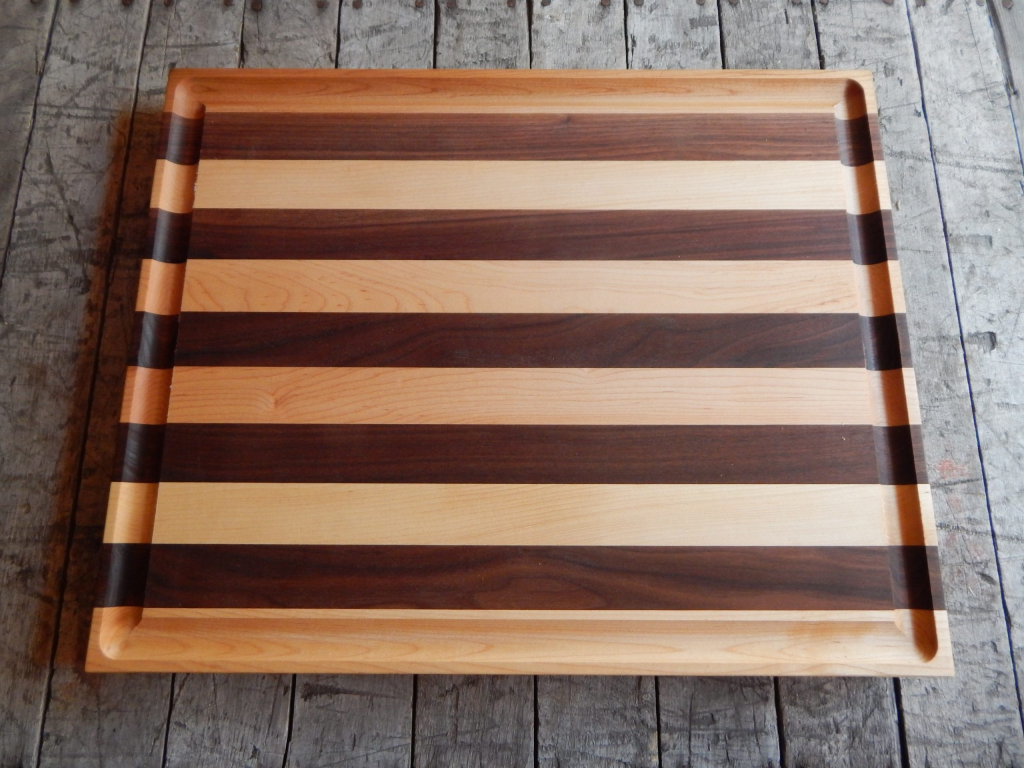
Walnut: The Best Wood for a Cutting Board with Style
For those who want a combination of function and aesthetics, walnut is another top contender for the best wood for a cutting board. Walnut is slightly softer than maple, making it an ideal option for those who prioritize protecting their knives. Additionally, its rich, dark color adds an elegant touch to any kitchen.
Benefits of Walnut for Cutting Boards
- Aesthetic Appeal: Walnut’s dark, chocolate-like color makes it a stylish choice for modern kitchens.
- Gentle on Knives: Walnut is softer than maple but still durable, making it a knife-friendly option.
- Closed Grain: Like maple, walnut has a tight grain structure, which prevents food particles from getting trapped in the wood.
- Easy Maintenance: Walnut cutting boards are relatively easy to maintain with regular oiling to prevent drying and cracking.
While walnut may be slightly more expensive than maple, its aesthetic appeal and knife-friendly qualities make it one of the best woods for a cutting board.
Read To Know About: How does apple pay show up on bank statement
Cherry: The Best Wood for a Cutting Board with Character
Another excellent option for a cutting board is cherry wood. Cherry is known for its unique, reddish-brown hue that deepens over time, giving it a rich, warm appearance. Though slightly softer than maple, cherry offers excellent durability and is gentle on knives.
Benefits of Cherry for Cutting Boards
- Natural Beauty: Cherry develops a deep, beautiful patina over time, making it an eye-catching addition to any kitchen.
- Knife-Safe: Being softer than maple, cherry is a great choice for protecting your knives.
- Closed Grain: Cherry has a tight grain that resists bacteria and food particle accumulation.
- Long-Lasting: With proper care, cherry cutting boards can last for many years.
For those looking for a blend of aesthetics and functionality, cherry stands out as one of the best wood choices for a cutting board.
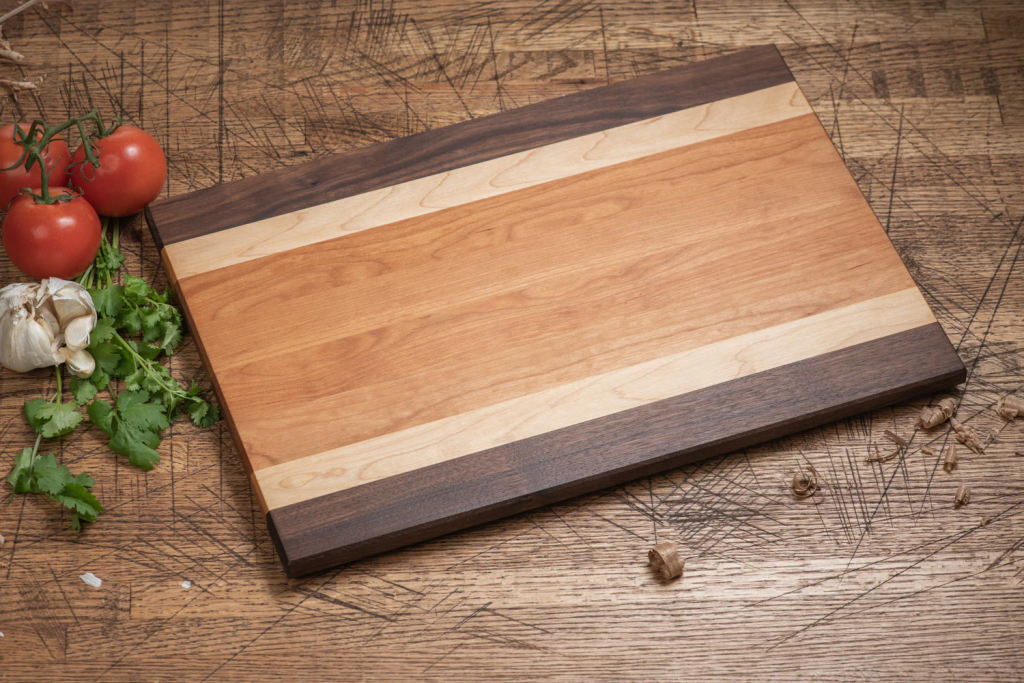
Bamboo: A Sustainable Alternative for Cutting Boards
Although not technically a wood, bamboo is often considered one of the best materials for cutting boards, particularly for environmentally-conscious consumers. Bamboo is fast-growing, renewable, and has many of the characteristics found in traditional hardwoods.
Benefits of Bamboo for Cutting Boards
- Eco-Friendly: Bamboo is a sustainable, renewable resource, making it an excellent choice for eco-conscious cooks.
- Hardness: Bamboo is harder than maple, meaning it’s more resistant to scratches and dents.
- Low Maintenance: Bamboo cutting boards require minimal upkeep and are resistant to water damage.
- Affordable: Bamboo cutting boards are generally less expensive than hardwood options.
However, bamboo can be harder on knives than traditional hardwoods, so it’s essential to consider this when choosing the best wood for a cutting board.
Teak: The Best Wood for a Cutting Board with Moisture Resistance
If you’re looking for a cutting board that excels in moisture resistance, teak is an excellent choice. Teak is naturally rich in oils, which make it resistant to water, warping, and bacteria growth.
Benefits of Teak for Cutting Boards
- Moisture Resistance: The natural oils in teak make it highly resistant to water and bacteria, ideal for high-moisture environments.
- Durability: Teak is a hard, durable wood that can withstand heavy use.
- Low Maintenance: Thanks to its natural oils, teak cutting boards require less frequent oiling compared to other hardwoods.
- Knife Protection: While teak is tough, it’s still soft enough to prevent excessive wear on knives.
Teak is especially suitable for those who want a low-maintenance, moisture-resistant cutting board that can handle daily kitchen use.

End Grain vs. Edge Grain: Which is the Best Wood for a Cutting Board?
In addition to choosing the right type of wood, it’s essential to understand the difference between end grain and edge grain cutting boards. Both styles have their own benefits, and understanding them can help you pick the best wood for a cutting board.
End Grain Cutting Boards
End grain cutting boards are made by arranging the wood so that the ends of the fibers are exposed on the surface. This “type of board” is considered the best for cutting because it’s more forgiving on knives and self-heals over time.
- Gentle on Knives: The end grain surface allows knives to sink into the fibers, preserving their sharpness.
- Self-Healing: The fibers of the wood “heal” after cutting, making the board last longer.
Edge Grain Cutting Boards
Edge grain cutting boards are made by cutting the wood along its grain and assembling it into a smooth surface. These boards are usually more affordable but may not be as durable as end grain boards.
- Affordable: Edge grain boards are generally less expensive than end grain options.
- Durable: Though not as self-healing as end grain, edge grain boards are still durable and great for everyday use.
Post You Might Like: InstaNavigation
How to Maintain Your Wooden Cutting Board
Once you’ve selected the best wood for a cutting board, it’s essential to care for it properly to ensure it lasts. Here are some tips to keep your board in top shape:
- Oil Regularly: Use food-grade mineral oil or beeswax to keep the wood hydrated and prevent cracking.
- Clean After Every Use: Wash your cutting board with warm water and mild soap. Avoid soaking it in water, as this can cause the wood to warp.
- Sanitize Occasionally: Use vinegar or a diluted bleach solution to sanitize your board and kill bacteria.
- Avoid Harsh Chemicals: Don’t use harsh detergents or abrasive scrubbers that could damage the wood.
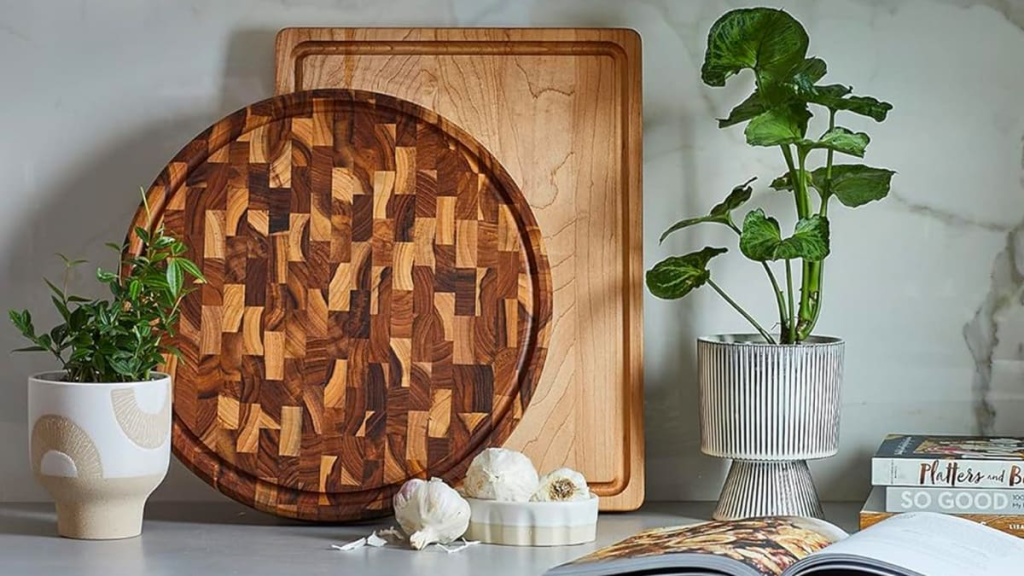
Conclusion: Choosing the Best Wood for a Cutting Board
Selecting the best wood for a cutting board depends on your cooking needs, aesthetic preferences, and budget. Maple, walnut, cherry, bamboo, and teak are all excellent options that provide a balance of durability, knife safety, and food safety. Whether you opt for a classic maple board or an eco-friendly bamboo alternative, maintaining your cutting board will ensure it lasts for years to come. The best wood for a cutting board should always meet your personal needs while adding a functional and stylish element to your kitchen.
FAlso Read: Dallas Mavericks vs Timberwolves Match Player Stats
Frequently Asked Questions (FAQs)
What is the best wood for a cutting board?
- Maple is often considered the best due to its durability, closed grain, and knife-friendly surface.
Is walnut a good choice for cutting boards?
- Yes, walnut is a great option for its balance between hardness, knife safety, and aesthetic appeal.
Why is maple commonly used for cutting boards?
- Maple is durable, has a closed grain that resists bacteria, and is gentle on knives.
Is bamboo better than hardwood for cutting boards?
- Bamboo is eco-friendly and durable, but it can be harder on knives compared to hardwoods like maple or walnut.
Can I use oak for a cutting board?
- Oak is not ideal for cutting boards due to its open grain, which can trap bacteria and moisture.
How do I maintain a wooden cutting board?
- Regular oiling with food-grade mineral oil and proper cleaning with mild soap helps maintain longevity.
What is the difference between end grain and edge grain boards?
- End grain boards are more durable and knife-friendly, while edge grain boards are more affordable but less resilient.
Is cherry wood good for a cutting board?
- Yes, cherry is a soft hardwood that protects knives and develops a beautiful patina over time.
How often should I oil my wooden cutting board?
- Oil your cutting board once every few weeks or when it appears dry to prevent cracking.
Is teak a good option for a cutting board?
- Teak is highly moisture-resistant due to its natural oils, making it a great choice for long-lasting boards.

